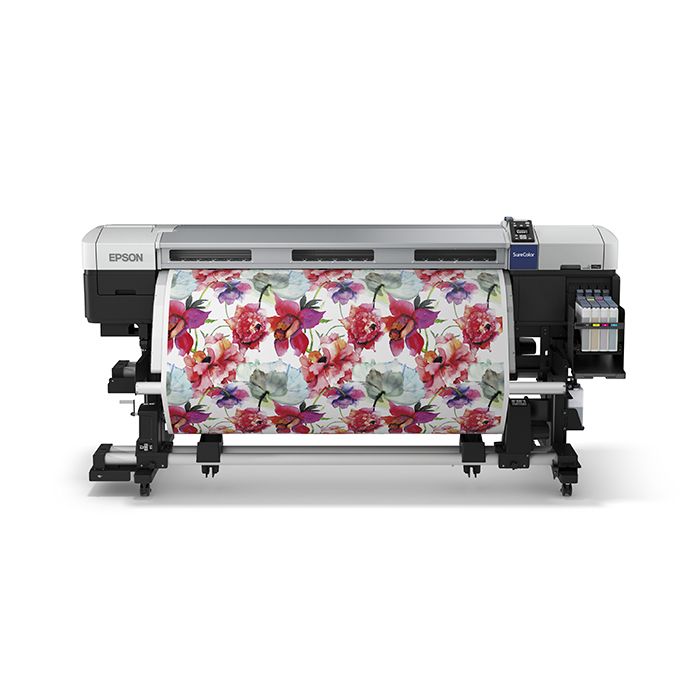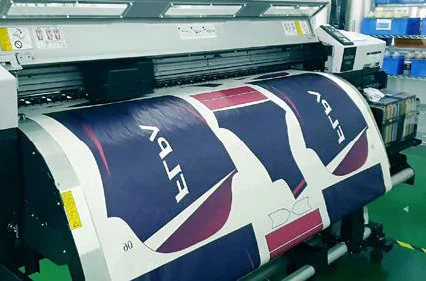Why DTF Printing is the Future of Custom Clothing Production
Why DTF Printing is the Future of Custom Clothing Production
Blog Article
A Comprehensive Guide to the Different Kinds of Fabric Printing Methods
Beginning on an expedition of cloth printing methods reveals a fascinating crossway of custom and advancement. Each method, from the careful craftsmanship of block printing to the rapid effectiveness of display printing, offers one-of-a-kind purposes and offers distinct benefits. Digital printing's flexibility and environmental awareness stand in stark comparison to the speedy personalization of warm transfer printing. At the same time, color sublimation printing captivates with its ability to generate lively, long-lasting layouts on synthetic fabrics. To truly grasp the subtleties and possible applications of these varied methods, a deeper investigation is crucial.
Block Printing
Block Printing, one of the earliest techniques of textile design, has an abundant background that dates back to ancient human beings. Coming from China around 220 A.D., this method later on spread to India and at some point Europe. The process includes carving elaborate styles right into wooden blocks, which are after that dipped in color and pushed onto textile to develop patterns. This method is significant for its ability to generate extremely outlined and repetitive styles.
The accuracy and craftsmanship associated with block printing make it a labor-intensive procedure, however it likewise enables a high degree of customization. Craftsmens can create one-of-a-kind patterns by incorporating different blocks or differing the application of dye. This adaptability has added to the long-lasting appeal of block printing in both contemporary and conventional textile layout.
Block printing is particularly valued for its aesthetic top qualities, consisting of the small variations in pattern and color that result from the hand-printing process. These blemishes provide a special character to each piece, distinguishing it from mass-produced textiles. Despite advancements in contemporary printing technologies, block printing remains a valued method, celebrated for its historic importance and imaginative value.
Screen Printing
Screen printing, an additional noticeable textile decor strategy, has changed the industry with its efficiency and versatility. This technique involves producing a pattern, known as a display, and utilizing it to apply layers of ink on the printing surface. Each color in the style needs a different screen, which permits complex and vibrant multi-colored prints.

One of the key advantages of screen printing is its versatility to various sorts of textiles, consisting of cotton, polyester, and blends. This technique is especially appropriate for large-volume orders as a result of its cost-effectiveness and rate. The longevity of the prints is one more considerable benefit, as the ink bonds well with the textile, guaranteeing resilient styles that withstand several washes.
The procedure begins with preparing the displays by covering them with a light-sensitive emulsion. As soon as dried, the design is moved onto the emulsion-coated screen using a UV source of light. The subjected areas harden while the unexposed components are removed, producing a stencil. Ink is then pushed through the pattern onto the textile utilizing a squeegee.
Display printing is widely made use of in the garment industry, advertising items, and customized garments. Its capacity for high-grade, thorough prints safeguards its condition as a foundation technique in fabric printing.
Digital Printing
Digital printing has actually quickly emerged as an innovative method in the fabric sector, leveraging sophisticated modern technology to produce high-resolution designs directly onto fabric. Unlike traditional approaches, electronic printing employs inkjet printers to deposit pigment or dye-based inks onto textiles, making it possible for vibrant and intricate patterns with an impressive level of information and shade precision.
One of the key advantages of digital printing is its adaptability. This method enables on-demand printing, which dramatically decreases waste and decreases supply prices. Additionally, it supports short runs and custom-made designs, making it suitable for custom tasks and limited-edition collections. The removal of screens and various other configuration requirements additionally improves effectiveness, lowering manufacturing time and labor costs.
Moreover, digital printing is environmentally pleasant. Branded clothing. It makes use of water-based inks and requires much less water and energy compared to standard techniques, straightening with sustainable practices. The precision of electronic printing likewise permits using a broader array of textiles, including cotton, silk, polyester, and blends, making certain versatility across different applications
Heat Transfer Printing
Exactly how does warmth transfer printing reinvent fabric design? This approach has actually brought substantial improvements by enabling dynamic and detailed designs to be transferred onto a variety of fabrics with impressive accuracy. Heat transfer printing entails utilizing heat and stress to transfer a style from a specifically created paper onto fabric. This process begins with printing the wanted picture onto transfer paper using specialized inks. As soon as the photo is printed, the paper is placed onto the fabric and subjected to a warm press, which moves the ink from the paper to the material.
Among the main benefits of warm transfer printing is its capability to generate high-grade, in-depth photos quickly and effectively. It is especially fit for small production runs and customized orders, making it a prominent choice for customized garments and marketing items. In addition, this technique is functional, suiting different kinds of materials consisting of cotton, polyester, and blends.
Additionally, warmth transfer printing is relatively economical compared to other methods, have a peek at this website as it calls for very little configuration and lower preliminary investment - sublimation printing. This price, coupled with its capability for generating lively, durable prints, highlights its pivotal role in modern-day fabric design

Dye Sublimation Printing
Dye sublimation printing, a sophisticated fabric printing method, offers unequaled vibrancy and longevity for designs on various synthetic materials. This method includes converting solid dye right into a gas without travelling through a liquid state, enabling the dye to penetrate the textile flawlessly. The process begins with look what i found printing the design onto a special transfer paper making use of sublimation inks. The printed transfer paper is after that positioned on the material, and both go through high heat and stress using a warm press. The heat causes the color to sublimate and bond with the fabric fibers, creating an irreversible, high-resolution print that resists fading and fracturing.
One of the essential benefits of color sublimation printing is its capability to generate continuous-tone prints with elaborate details and dynamic shades. Unlike various other printing methods, the color comes to be part of the fabric instead than sitting on top of it, resulting in a breathable and soft coating.
Conclusion
Block printing is respected for its artisanal high quality, while display printing is helpful for high-volume manufacturing. Digital printing gives convenience and ecological look these up advantages, whereas warmth transfer printing is optimal for fast modification.
Each approach, from the precise workmanship of block printing to the fast efficiency of display printing, offers unique objectives and uses distinct benefits. Digital printing's versatility and environmental awareness stand in plain comparison to the swift customization of warm transfer printing. Despite breakthroughs in contemporary printing innovations, block printing remains a cherished method, celebrated for its historical value and creative value.
Dye sublimation printing, an advanced textile printing strategy, supplies unequaled vibrancy and durability for styles on various artificial fabrics. Digital printing offers adaptability and environmental advantages, whereas warmth transfer printing is perfect for quick personalization.
Report this page